- Empty cart.
- Continue Shopping
Auspicious Energetic Symbols Combination (“त्रिशक्ति”)
Price range: ₹190.00 through ₹290.00
A unique combination of Hindu Holy religious symbols. These symbols are very auspicious and blessed. Each symbol has a different purpose and power, thus all three together produces unique energy. It is suitable for every place. wherever it is put, It removes the negative energy from that place and spreads positive energy.
- Om: Aum is often said to represent God in the three aspects of Brahman (A), Vishnu (U) and Mahesh (M)
- Swastik: Swastika is a symbol connoting general auspiciousness. It represents the purity of soul, truth, and stability.
- Trishul: The Trishula is a symbol of the empire and the irresistible force of transcendental reality.
Om (pronounced Aum)
Om (or Aum, ॐ) is the sacred sound symbol that represents Universe; the ultimate reality (Brahman). It is prefixed and sometimes suffixed to all Vedic mantras and prayers. Aum is often said to represent God in the three aspects of Brahman (A), Vishnu (U) and Shiva (M). As the Divine primordial vibration, it represents the one ultimate reality, underlying and encompassing all of nature and all of existence. The written syllable ॐ called Omkara serves as a deeply significant and distinctly recognizable symbol for Hindu dharma. The pronunciation of Aum moves through all possible human linguistic vowel sounds and is different from the pronunciation of Om. Both are often symbolically equated, although they are sonically distinct
Aum is seen as a fundamental component of the physical and metaphysical tenets of Hinduism – the means and the goal of life, the world and the Truth behind it, the material and the Sacred, all form and the Formless.
The Om symbol consists of three curves, a semi-circle, and a dot. The lower curve is the largest and is a symbol of the waking state of consciousness. Its large size means that this is the most common state of the mind.
The middle curve represents the state between deep sleep and consciousness; also known as the dream state. In this state, one is able to view the world behind closed eyelids.
The upper curve symbolizes the unconscious state. In this state of deep sleep, the person does not get any dream. Overall, the three curves represent the entire physical phenomenon.
The semi-circle in the Om symbol separates the dot from the curves and is a representation of Maya. Maya is believed to prevent us from reaching the highest state of bliss as represented by the upper curve.
The dot on the symbol is used to represent the fourth state of consciousness where a person comes to rest and achieves the ultimate aim of all their spiritual activity. This fourth state is the absolute state that illuminates all the other three states.
Om is the most chanted sound in all of India. In addition to being used in sacred texts, prayers and invocations, the Om sound may also be used as a greeting. In a nutshell, Om is the god in the form of sound- a word of great power. It’s the most important mantra is both Hinduism and Buddhism as well.
Swastika
The swastika is a symbol connoting general auspiciousness. It may represent the purity of soul, truth, and stability or, alternatively, Surya, the sun. Its rotation in four directions has been used to represent many ideas, but primarily describes the four directions, the four Vedas and their harmonious whole. Its use in Hinduism dates back to ancient times.
The Swastika symbol is widely used in Indian religion specifically Hinduism, Buddhism, and Jainism. The term Swastika is derived from the Sanskrit term “svastika” and has two meanings. ‘Sv’ means ‘good’ or ‘higher self, ‘Asti’ means ‘to be’ or ‘being’, and ‘ka’ is a suffix.
The word basically translates to “to be good” or “being with the higher self.” This symbol is mostly used as a representation of good fortune and other times it’s also used as a sun symbol.
The figure has right-angled arms which represent the indirect way that Divinity is apprehended by intuition and not by intellect.
The arms are usually right-facing (clockwise) but sometimes may be left-facing in the mirrored form. The anticlockwise Swastika is used as a symbol of magic, night, and the goddess Kali.
The Swastika is in the shape of a cross which has four arms, pointing in all the four directions to describe the four Vedas and to signify the omnipresence eternal nature of the Absolute.
The Swastika symbol may also be used to represent peace, honesty, truth, purity of the soul, and stability. One of the uses of the symbol is to mark the opening of account books, doors, and thresholds.
Trishula
The Trishula is a Sanskrit term that translates to “three spears” and refers to a trident spear that is the emblem of Lord Shiva. The Trishula is a symbol of the empire and the irresistible force of transcendental reality.
Each of the spear’s pong represents Shiva’s three aspects:
- Creator
- Destroyer
- Preserver
The pongs also represent his three powers:
- Desire
- Action
- Wisdom
Generally, the trident is a symbol of the balance created by the three facets of consciousness which are cognition, affection, and conation.
| Weight | N/A |
|---|---|
| Dimensions | N/A |
| Size | 5.5 inches, 6.5 inches |
Brand
Sri Kashi Vedic Sansthan
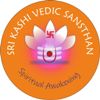






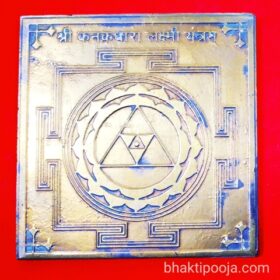




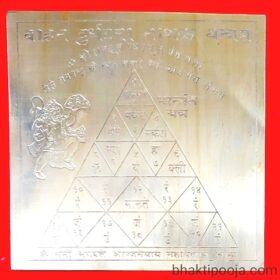
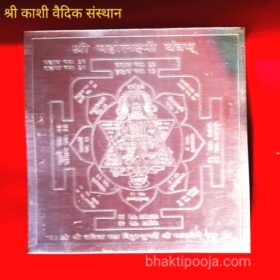

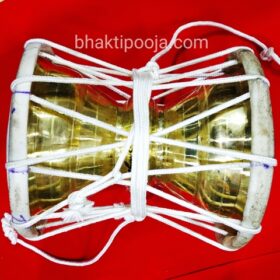
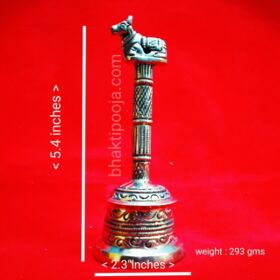

Reviews
There are no reviews yet.